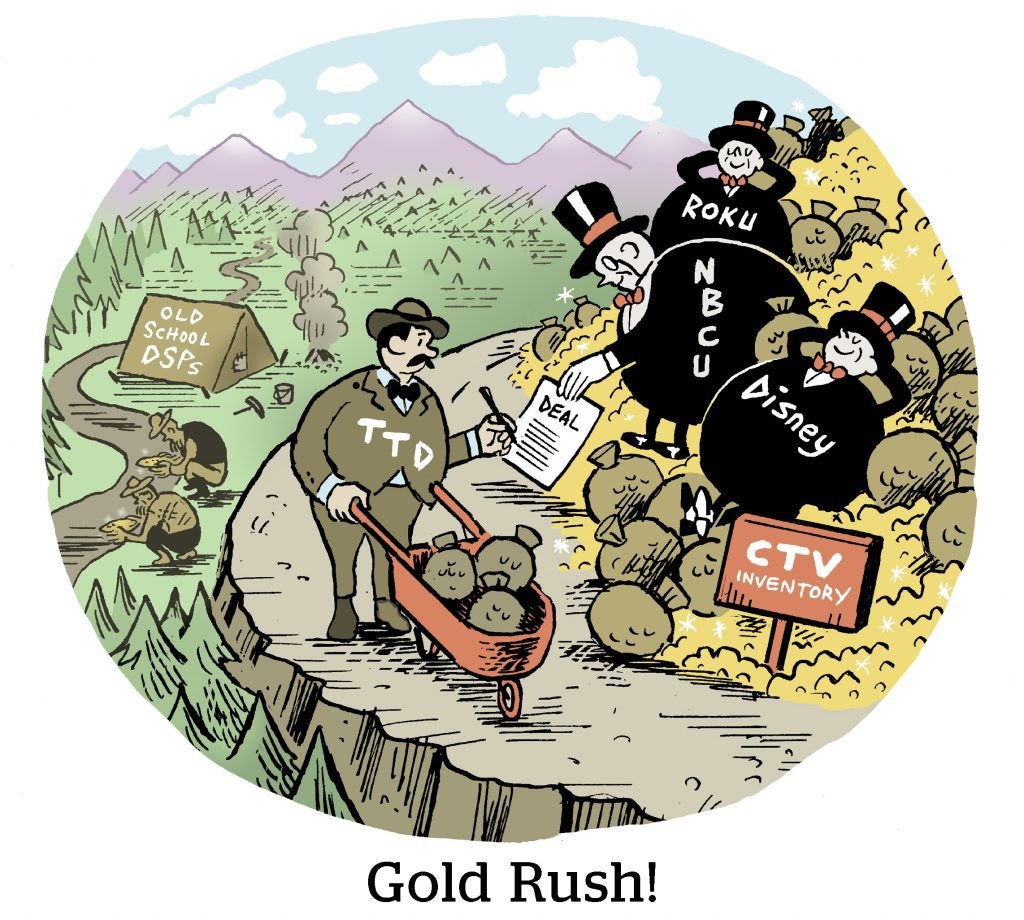The Trade Desk’s revenue machine is still running strong.
But with an economic downturn on the horizon, investors are pressing for TTD’s areas of optimism to translate into bottom line results.
On Wednesday, The Trade Desk reported $395 million in total Q3 revenue, up from $301 million during Q3 last year. Its net profit, however, dropped by more than half from $39 million to only $16 million.
To put these numbers into context, The Trade Desk’s revenue growth during what was a very tumultuous quarter is impressive. When Alphabet and Meta reported earnings in October, Google’s YoY ad revenue ticked up by just 6% and Meta’s actually declined year over year.
But for The Trade Desk to be flirting with unprofitability, even for a single quarter, is worrisome for investors. Criteo fended off the same type of investor pressure a few weeks ago when it reported that its Q3 profit had dropped from $24 million in 2021 to only $6 million this year.
“I don’t often mention competitors,” Jeff Green told investors on Wednesday. But The Trade Desk sets itself apart from other independent programmatic companies in large part because it has consistent and high free cash flow, he said.
And the company remains in a “landgrab mode,” Green said.
In answer to an investor question about whether The Trade Desk expects its profit margin to improve next year, CFO Blake Grayson deflected a bit, noting that “a lot of companies with more resources than us are pausing or reducing” their hiring and internal investments, whereas TTD is not.
Meta, for example, announced massive layoffs on Wednesday, reducing headcount by 11,000, which translates to roughly 13% of its workforce. It’s also extending a hiring freeze through Q1 of next year.
Grayson didn’t exactly answer the question, but the message is that The Trade Desk will continue to hire and invest. He also mentioned that the company is hosting its annual employee event (after a two-year hiatus) that will bring its employees together in one place. Costs related to in-office work, business travel and live events are also expected to increase, he said.
IRL is fun and all, but that means The Trade Desk’s profit margin could remain slim or – gasp! – drop into the red.
The Trade Desk does have another profit margin defense, but it’s an awkward one to make. The company generated $113 million in free cash flow in Q3, most of which went to paying an installment of an $830 million compensation package Green is owed over the course of two years for having smashed share performance goals.
A different investor pressed company executives about whether The Trade Desk’s profit margin will be squeezed by the growth of CTV. Software and data in TV Ad Land account for a much smaller percent of the overall media plan compared with programmatic. As The Trade Desk transacts more of its business with TV ad sellers, might its margin come to resemble that of legacy TV ad tech?
“We’ve been asked some form of this question a lot over time,” Green said.
From The Trade Desk’s perspective, the fact that CPMs are higher on CTV and the importance of campaign creative to the brand both serve to make the availability of data and targetability even more valuable to those advertisers.
The Trade Desk’s take rate has stayed within a relatively narrow band (high-teens to low-twenties) since it went public in 2016, according to Green.
Considering the advantages of programmatic reach and frequency management compared with the “spray and pray” approach of linear broadcast, CTV advertisers are getting efficacy gains without sacrificing margin, Green said.














